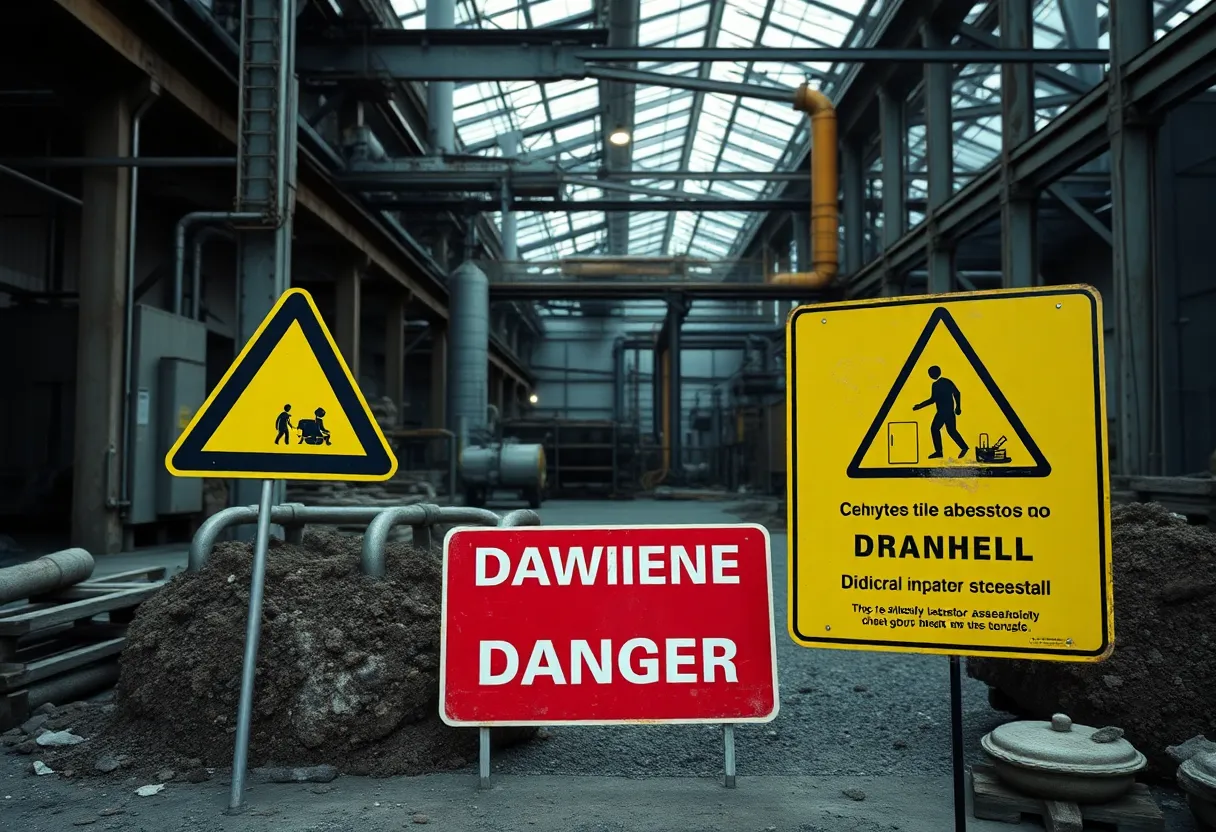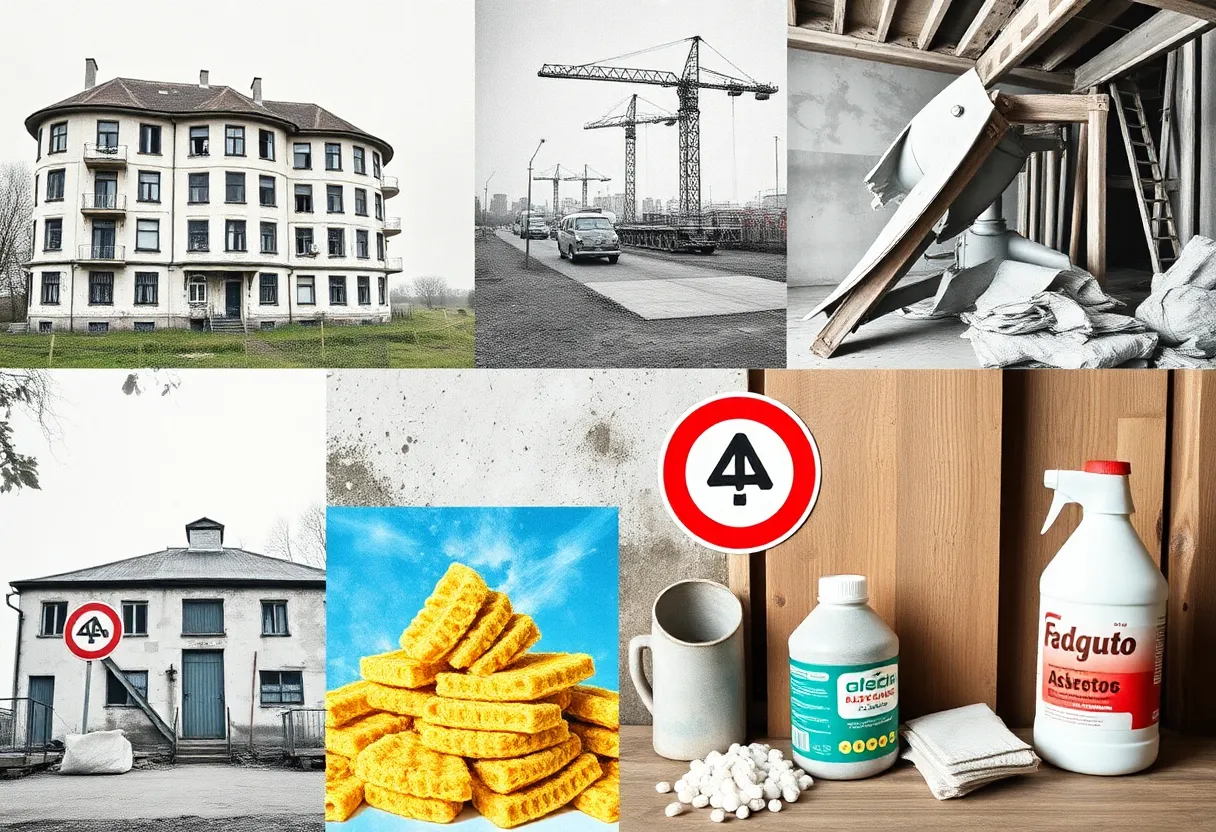News Summary
The EPA’s review of the chrysotile asbestos ban raises concerns among public health advocates over potential dangers of weakened protections.
Asbestos Under Fire: EPA’s Reconsideration Sparks Controversy
The toxic legacy of asbestos continues to loom large today, as the U.S. Environmental Protection Agency (EPA) under President Donald Trump is reconsidering a rule that bans chrysotile asbestos, the last type still permitted in American industries. With the potential rollbacks of protections that have been in place since March 2024, public health advocates are sounding the alarm over what might happen if the ban is weakened.
An Ominous Threat
Asbestos is a group of naturally occurring minerals known for their heat resistance and strength, making them once a favored material in construction and manufacturing. However, its association with severe respiratory diseases, including mesothelioma, lung cancer, and asbestosis, has made it notorious. The EPA estimates that exposure to asbestos causes over 40,000 deaths annually in the United States alone. Mesothelioma, a rare and aggressive form of cancer primarily linked to asbestos exposure, often takes decades to manifest, complicating the understanding of its dangers.
The Ban’s Grounding
Throughout the last few decades, measures to mitigate the risks associated with asbestos have been implemented, yet many argue they fall short. The Biden administration finalized a rule under the Toxic Substances Control Act in March 2024, specifically aimed at prohibiting the manufacture, processing, and commercial use of chrysotile asbestos. This ban had a significant impact on eight U.S. facilities primarily in the chlor-alkali industry, which utilizes chrysotile asbestos for the production of chlorine and sodium hydroxide. These facilities were given five years to phase out their use of asbestos, while the automotive parts manufacturing industry faced shorter deadlines.
The Controversial Review
As of June 2025, the ban on chrysotile asbestos remains in effect, despite ongoing speculation on social media regarding its potential reversal. The EPA’s decision to review this regulation comes amidst a lawsuit from various industry groups, including the American Chemistry Council, which argue that the original rule is overly broad. The EPA has paused litigation while it reassesses whether the ban truly addresses the unreasonable risk posed by asbestos exposure. This review process is expected to take about 30 months, during which the existing ban will remain intact.
Health Risks vs. Industry Interests
Many public health advocates warn that the reconsideration of the chrysotile asbestos ban could further weaken protections against exposure. Asbestos is recognized as one of the deadliest occupational hazards, and the repercussions of exposure are not just immediate; they can take decades to present as critical health issues. Critics of the EPA’s review contend that it aligns with a broader trend of deregulation that puts corporate interests above public wellness.
Chlor-Alkali Industry’s Stakes
The chlor-alkali industry comprises significant players with vested interests in maintaining access to chrysotile asbestos for chemical manufacturing. Industry representatives have voiced concerns that banning this type of asbestos could disrupt supply chains and drive up production costs. However, advocates for public health remain resolute in highlighting the fatal consequences of asbestos exposure, emphasizing the need for strict regulations in the face of compelling scientific evidence.
The Global Perspective
Globally, asbestos has been banned in over 50 countries due to its health hazards. In the United States, however, chrysotile asbestos remains the last type allowed for industrial use. Furthermore, a sweeping 1989 asbestos ban has largely been overturned, leaving the door open for continued utilization of this dangerous material.
Looking Ahead
As the EPA conducts its review, there is a pressing need for clear communication regarding public hearings and any proposed regulatory changes. There is substantial apprehension around the potential impacts of rolling back restrictions on asbestos usage. With the legacy of asbestos exposure causing tens of thousands of fatalities each year, the ongoing deliberation regarding its regulation stands at a crucial juncture that will affect both public health and industrial practices for years to come.
Deeper Dive: News & Info About This Topic
HERE Resources
Trump Administration Reconsiders Chrysotile Asbestos Ban, Igniting Health Concerns
Unmasking the Asbestos Threat in Supermarkets: A Hidden Danger
Philadelphia Schools Face Criminal Charges Over Asbestos Violations
EPA Motion Sparks Alarm Among Mesothelioma Advocates
Controversial Asbestos Removal Plan for New Fire Station
Philadelphia’s Schools Face Mesothelioma Threat Due to Asbestos
Tragic Legacy of the USS Blandy: Heroes Affected by Asbestos
USS Bausell Crew Faces Asbestos-Related Health Crisis
USS Bigelow: Asbestos Legacy Puts Veterans at Risk
New Developments in Asbestos Regulation: A Fight for Public Health



















